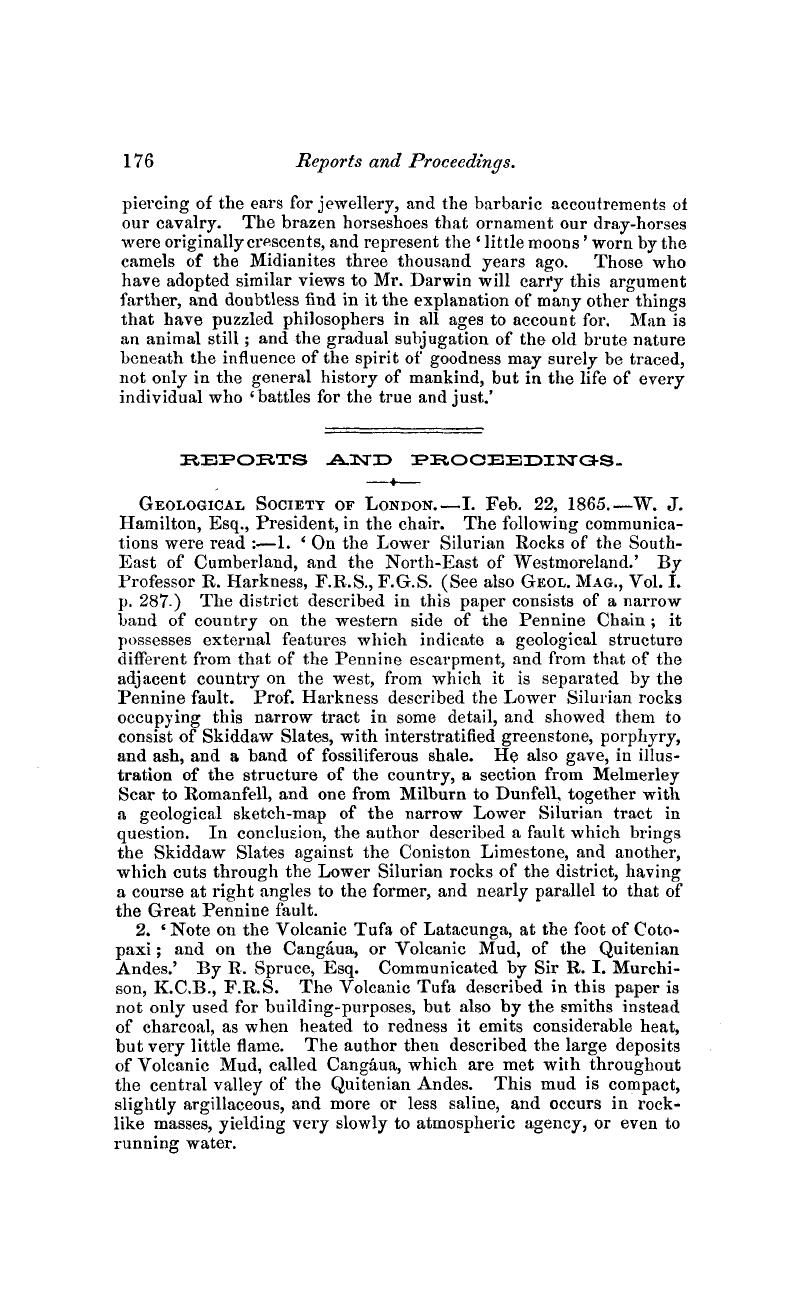No CrossRef data available.
Published online by Cambridge University Press: 01 May 2009

page 178 note * Abundant in the upper chambers.
page 178 note † Abundant throughout.
page 178 note ‡ Neither Rhinoceros tichorhintis, Ursus spelcsiis, nor Hycena sptlcea, so common in European cayes, occurs at Gibraltar.
page 179 note * See Geological Magazine, No. VII. p. 41.Google Scholar
page 187 note * Mr. K. W. Skipsey says in a letter, ‘At a subsequent visit, I found in the same bed another fossil shell, like Axinus; and then examined an old pit 300 to 400 yards distant, making inquiries of the people engaged in working it. Their statement was that at 95 fathems the “Main Coal” was got, and for years wrought without any obstacles or dislocations; and that the mine was carried within 200 yards of the new shaft, the coal-seams being persistently in their proper place. From the excavated material at the old pit-head I also obtained Produetus scabriculus and Anthracosia acuta, the latter in ironstone-nodules, different from those in which the Productus is found, being of a different colour and in their normal state of carbonate. From the position of the Anthracosia-nodules at the pit-head, they must evidently have been got in their usual place in our Coalmeasures, ranging from the “Ell Coal” down to the “Main Seam,” and thus further proving the general persistent character of the ground. I inquired pointedly of those well acquainted with the ground as to the possibility of an extensive slip throwing up the lower beds, and the idea was scouted as groundless; the only dislocation being the dyke mentioned in my paper which throws the coal down 5 to 10 fathoms on one side; and that dyke was not met with till the shaft was driven 50 fathoms, being 20 fathoms below the newly found shell-bed. There is a total absence of limestone, or anything else, beyond the usual strata of our Upper Coalmeasures.'Mr. John Young adds, ' that it would require a hitch or fault of 170 fathoms to bring our highest marine beds to the position of the shell-bed above mentioned; and we have no evidence of such an enormous fault in that district, nor of the Upper Carboniferous Limestone series ever have been reached in any of the pits, which are very numerous there’.